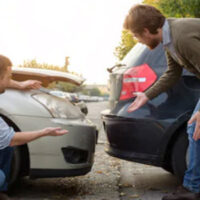The Importance of Accounting for Blind Spots

Blind spots, as most careful drivers are aware, are zones to the side and rear of a car where approaching vehicles are not visible to the driver, even when using a rear view or side mirror. Failing to check one’s blind spots can have devastating consequences, especially when one of the vehicles is a large commercial truck, as these types of collisions tend to result in catastrophic injuries. For help determining whether your own accident was the result of someone else’s negligence in failing to account for a blind spot, please contact our dedicated car accident legal team today.
Commercial Vehicles and No Zones
Referred to more commonly as “no zones”, blind spots on commercial trucks are located primarily near the front, rear, and sides of the tractor portion of the vehicle. While it is true that blind spots exist on all vehicles, they tend to be more pronounced on larger vehicles, which means that smaller cars can travel much further without being seen by the driver operating the larger truck. Unfortunately, this means that it is much more likely that blind spot-related accidents will involve larger vehicles like commercial trucks. In fact, the Federal Motor Carrier Safety Administration (FMCSA) reports that around one-third of all car crashes between passenger vehicles and large trucks occur in no zones.
While these types of accidents can take place at any time, they are especially common when a truck is attempting to merge into another lane or is making a wide turn. It’s also important to note that blind spots are dangerous not only for motorists, but also for any pedestrians, cyclists, and motorcycle riders who are at high risk of injury if involved in a collision with a vehicle.
Establishing Negligence
Although many drivers are careful to check their blind spots before merging, making turns, or reversing, an alarming number fail to do so. When this type of negligence results in an accident, the at-fault party can be held liable for damages. However, demonstrating that this type of negligence caused an accident can be difficult, as it requires that the plaintiff prove the exact locations of the vehicles at the time of the accident through the use of:
- Police reports;
- Data from in-vehicle technologies;
- Eyewitness statements;
- Video recordings; and
- Photographs and measurements from the scene of the accident.
When this evidence demonstrates that one vehicle was in another’s blind spot at the time of an accident, the injured party will have a much better chance of receiving financial compensation for his or her medical bills, lost wages, vehicle damage, and pain and suffering.
Call Today to Speak with an Experienced Car Accident Lawyer
If you were injured in an accident through no fault of your own, you may need the assistance of an experienced attorney, especially if you are suffering from a severe or catastrophic injury. To speak with a dedicated Fort Lauderdale auto accident attorney about your own case, please call Boone & Davis at 954-566-9919. Initial consultations are offered free of charge, so please don’t hesitate to call or contact us today.
Resource:
fmcsa.dot.gov/safety/driver-safety/cmv-driving-tips-inadequate-surveillance
https://www.booneanddavislaw.com/the-risks-of-driving-with-poor-visibility/
